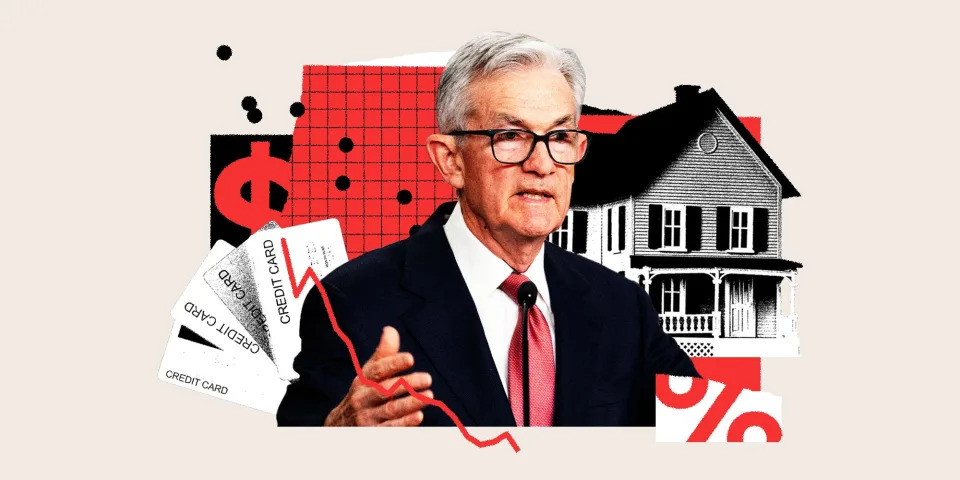The case for a pause, a cut, or a hike: What markets see for rates after the Fed upended forecasts

The Fed scrambled the market's outlook for interest rates next year at its meeting this week, and investors are eyeing a number of possible policy outcomes as the central bank shifts its focus back to keeping inflation in check.
Investors quickly adjusted their rate expectations for the coming year after the Fed's December policy meeting. The central bank cut interest rates another 25 basis points but issued more hawkish guidance on the trajectory of future cuts.
Markets are pricing in a 66% chance the Fed will issue one or two quarter-point cuts next year, according to the CME FedWatch tool, in-line with what central bankers projected Wednesday. In the central bank's summary of economic projections, officials dialed back rate cut expectations from four to two reductions in 2025.
But the market also thinks the odds that the Fed won't cut interest rates at all next year have spiked. The chance that interest rates remain at their current level by December 2025 had risen to 18.5% by Thursday morning, up from 6.6% a week ago.
A January Fed pause , meanwhile, looks overwhelmingly likely, with markets pricing in a 91% chance rates will be unchanged at the end of the next Fed meeting on January 29.
According to RBC Capital Markets, if the Fed skips another rate cut in January, the central bank will likely enter a prolonged pause.
"If the Fed does 'skip' January, we are not sure they actually get started again," strategists said in a note, though the firm is still calling for a 25 basis-point cut the following month.
Ed Yardeni, the president of Yardnei Research, pointed to strong economic growth in recent months, which he said negates the case for the Fed to cut interest rates significantly in 2025.
Economic growth in the US was revised upward for the third quarter on Thursday, with GDP rising 3.1% on an annual basis. Inflation , meanwhile, has reversed course and ticked higher in recent months, with consumer prices rising 2.7% in November, slightly hotter than the prior month's 2.6% yearly pace. Wholesale price inflation has also edged up again after falling earlier in the year.
"We think that economic growth will be much stronger than the Fed expects," Yardeni wrote. "If real GDP growth beats the Fed's expectations, as we expect, then the FOMC may be on pause for a while."
Some market participants are also concerned the Fed may hike interest rates next year, undoing some of its policy easing.
Powell said Wednesday the central bank would not rule out a possible rate increase in 2025. CME futures, though, aren't pricing in the scenario that move up from current levels.
"Powell did not even soften that message, as he has done in prior instances, by saying it is not the FOMC's current forecast," Nicholas Colas, the co-founder of DataTrek Research, said in a note.
However, some see the odds of a hike as more likely than markets may believe them to be. The chance that the Fed will issue another rate hike in 2025 is probably around 40%, according to Torsten Sløk, chief economist at Apollo Global Management.
"The strong economy, combined with the potential for lower taxes, higher tariffs, and restrictions on immigration, has increased the risk that the Fed will have to hike rates in 2025," Sløk wrote to clients on Thursday. "For investors, it is starting to look similar to 2022 — to high inflation, rising interest rates, and falling stock prices. The bottom line is that there are significant downside risks to the 60/40 portfolio as we enter 2025."
Others agree, emphasizing that inflation is the real threat to forecasts for rates to continue easing.
"The Fed knows that services inflation has been stubbornly sticky of late, so they need to let the first series of rates cuts soak, so they signal to markets that they are willing to stop, or even raise rates again, if inflation doesn't cooperate lower," Jamie Cox, a managing partner at Harris Financial Group, said in a statement.
Read the original article on Business Insider

